It takes time and effort to get to La Aldea de San Nicolás. Yet, as in a trip to the similarly out-of-the-way Artenara, you won't forget your visit in a hurry. Here's an idiot's guide to the municipality, complete with directions on how to get there.
La Aldea de San Nicolás, where the wind blows
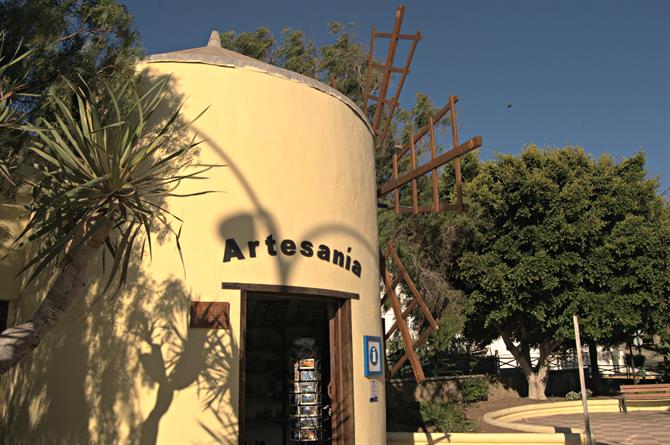
There are plenty of windmills in La Aldea de San Nicolás. Indeed, my first port of call's at the municipality's tourist information office. Which, as you can see, from the photo above, is housed in a windmill. Where the suitably informed and informative Rocío Araña will be able to point you in the right direction, from 9:00am until 2:00pm Monday to Friday.
My start was an early one. I caught Global's 6:30am 105 from Las Palmas to Gran Canaria to Gáldar. There I took the 7:30am's 101 to La Aldea de San Nicolás, which dropped me off opposite the tourist information office. The route's rather more straightforward by hire car, travelling along the GC-2 and then GC-200 from the north or the GC-1, GC-500, and then GC-200 from the south.
La Aldea's living dolls
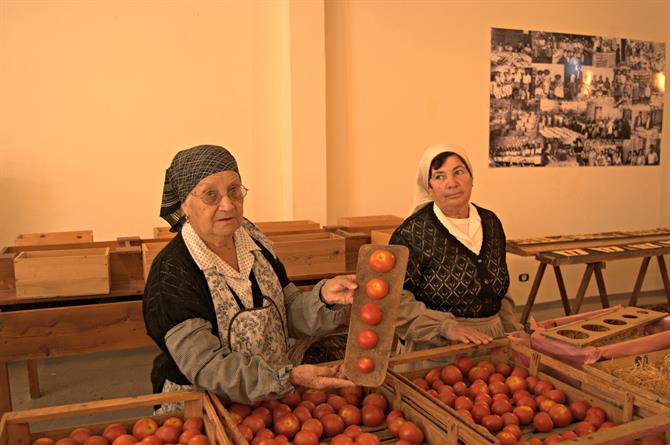
Rocío and I were soon joined by José Pedro Suarez, from Proyecto Cultural de Desarrollo Comunitario La Aldea. In 1980, José, and a fellow teacher Lidia Sanchez González, set up this cultural project. Which has resulted in 13 living museums throughout the centre of La Aldea de San Nicolás.
One of these is the Almacén de Tomates, Los Velázquez Museo, chronicling the development of the municipality's biggest export industry from the days of the salad fruit being transported by camel onwards. Here I met Mamina (pictured on the left) who demonstrated how the tomatoes were measured before being packed by size. She's something of an expert on the subject of the Aldea tomato, famously Queen Elizabeth II's favourite variety of tom, having started packing and picking at just 10 years old.
Old-school La Aldea
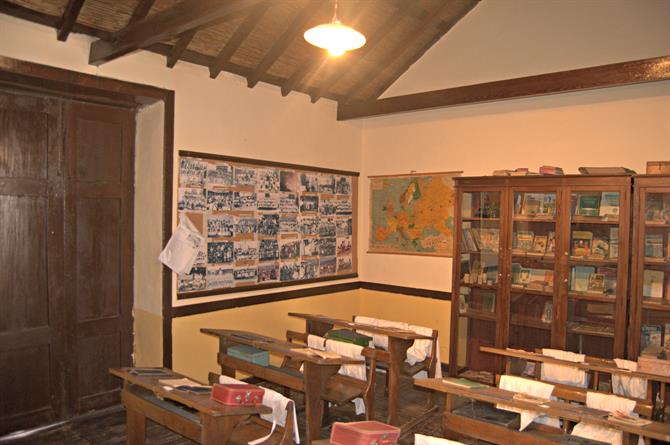
Another of the living museums is El Museo de la Escuela, dedicated to revered schoolmistress Carmita Afonso. This recreates a state school of the 1950s, complete with crucifix and photograph of former dictator, Francisco Franco. José Pedro points out the display of toys the parents used to make for their children, fashioned out of the likes of olive-oil containers.
Keeping shop
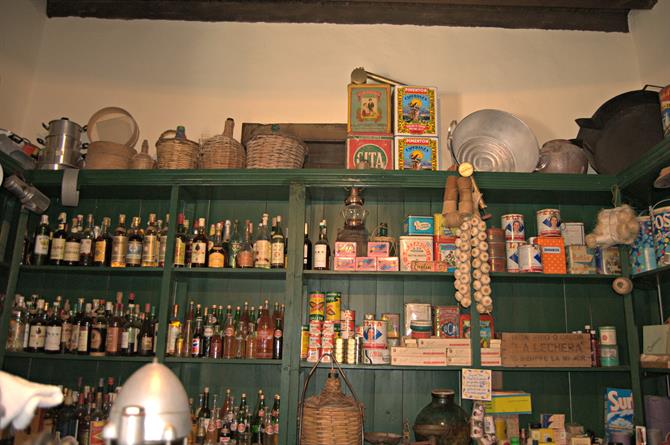
Elsewhere, La Tienda de Juan Déniz's a faithful reproduction of the old shop in Tasarte, a coastal hamlet in the municipality. This specialized in oil and vinegar. Before the GC-200 was built in the 1940s, most of these products would have been brought in by boat.
To visit the living museums, you have to book an appointment in advance (928 892 425/ 928 890 378). Typical visitors include classes of schoolchildren and parties comprising 10+ tourists. If you are smaller in number, it's still worthwhile phoning to see if you can join a bigger group on their guided visit.
Finding religion in La Aldea de San Nicolás
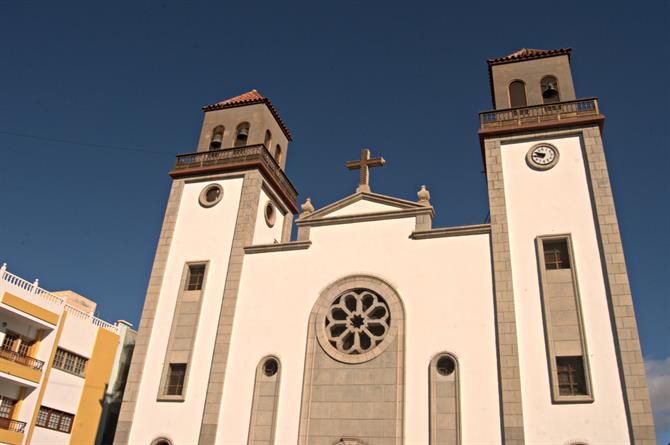
The patron saint of La Aldea de San Nicolás is Saint Nick of Italy's Tolentino. Indeed, the municipality used to be known as La Aldea de San Nicolás de Tolentino before the locals decided to shorten the name. Well, times change. Its high street, Calle Real, used to be known as Calle General Franco, after all.
It's on this high street that the parish church can be found. Built in 1972, its grand design is a world away from the humble 14th-century hermitage located in the Puerto de la Aldea. This was constructed by Mallorcan missionaries who arrived on the island prior to the Spanish Conquest.
Take a hike in La Aldea
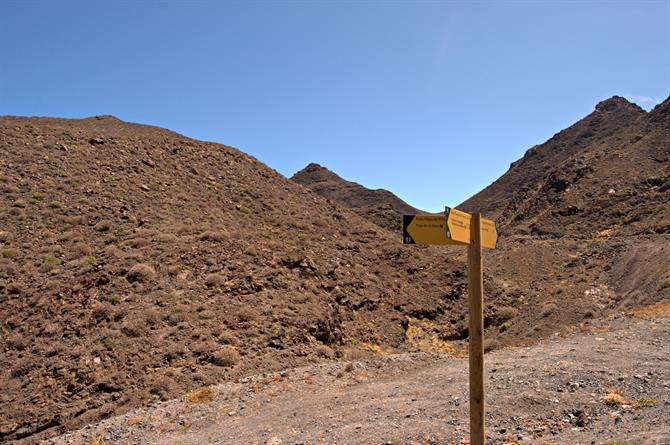
Like most municipalities on Gran Canaria, La Aldea de San Nicolás is an ideal place to explore on foot. This photo was taken on the shortish trek to the Playa del Puerto which includes a turnoff to the Los Caserones archaelogical complex. Bear in mind that the skeletons you'll be able to see there are not real but included for illustrative purposes.
An altogether more challenging hike's to the mythical beach of GüiGüi. You can walk from a starting point halfway between village centre and port, if you want to make a day of it. Beginning from the coastal outpost of Tasartico, however, will see you reach the beach in around two and a half hours.
Port sunlight

The Playa del Puerto was the La Aldea de San Nicolàs' first natural port when the municipality was very much an island within an island. When La Aldea was more accessible to a sea visit from Santa Cruz de Tenerife than a land one from Las Palmas de Gran Canaria. Then came 1900 and the building of the Puerto de La Aldea as tomato production had begun in the municipality.
Travelling from the north, as I did, you'll hit the port before the village centre. Such was my travel sickness that I was sorely tempted to get off the bus early. The tourist information office's Rocío Araña would later give me a top tip: sit towards the front or middle of the bus rather than the back if you want to feel the coastline-hugging curves less on a bus journey where the driver seems to race along with the wind. I duly followed her advice on my return journey and the travelling experience was a lot smoother.
La Aldea's pond life
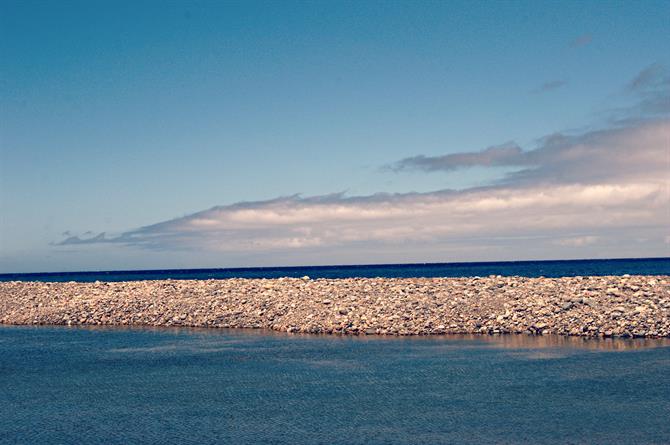
Walk along the promenade at the Playa de la Aldea and you'll see a signpost for Parque Rubén Diaz. This park is home to tarahales trees which provide the perfect shelter for a picnic, with the tables the ideal setting. Continue further and you'll see the famous Charco de la Aldea.
This is the location for one of the ten fun fiestas celebrated on the island. In imitation of the canarii, locals use a plant sap of thistles and tabaibas (from the Euphorbia family of flora) to poison the water. This makes the lisa fish easier to catch with competitors' bare hands, the ultimate object of the 11th of September's Fiesta del Charco.
